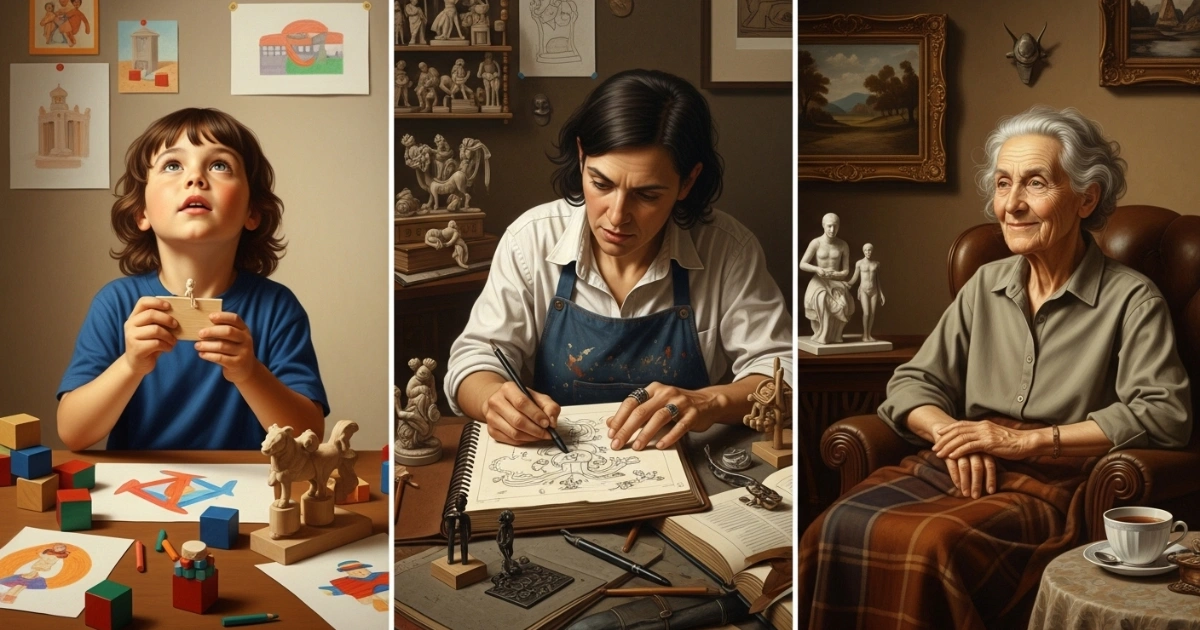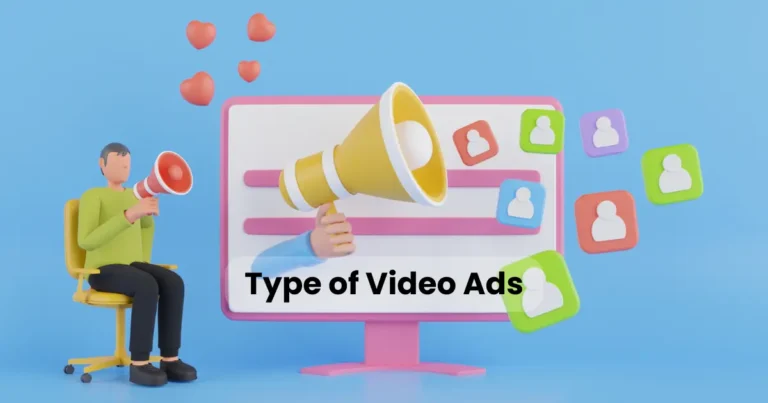Three Selves of the Creator: Boost Your Creativity

Contents
- 1 What Are the Three Selves of the Creator?
- 2 How the Three Selves Interact
- 3 Practical Steps to Leverage the Three Selves for Maximum Creative Success
- 4 Real-World Examples of the Three Selves in Action
- 5 Common Challenges and How to Overcome Them
- 6 Why the Three Selves Matter for Maximum Creative Success
- 7 Tips for Long-Term Creative Growth
The concept of the three selves of the creator offers a powerful framework for understanding and enhancing your creative process. Creativity is not just about talent; it’s about aligning your inner selves to work harmoniously. By exploring the intellectual, emotional, and instinctual selves, you can tap into your full creative potential and produce work that resonates deeply. This article dives into the three selves of the creator, explaining their roles, how they interact, and how you can leverage them for maximum creative output. Whether you’re an artist, writer, or entrepreneur, understanding these selves will transform your approach to creativity.
What Are the Three Selves of the Creator?
The three selves of the creator refer to the intellectual self, the emotional self, and the instinctual self. Each plays a unique role in the creative process, and balancing them is key to achieving maximum creative success. Let’s break down each self and its contribution.

The Intellectual Self
The intellectual self is the analytical part of your creative mind. It’s the planner, the strategist, and the problem-solver. This self thrives on logic, structure, and critical thinking. For example, when writing a novel, the intellectual self outlines the plot, develops characters, and ensures the story makes sense.
To engage your intellectual self effectively, consider these strategies:
- Set Clear Goals: Define what you want to achieve with your project. For instance, aim to write 500 words daily or complete a painting in two weeks.
- Research Thoroughly: Gather relevant information to inform your work. A well-researched project adds depth and credibility.
- Organize Your Thoughts: Use tools like mind maps or outlines to structure your ideas logically.
However, over-relying on the intellectual self can stifle creativity. Too much analysis may lead to perfectionism, delaying progress. Therefore, balance is crucial.
The Emotional Self
The emotional self is the heart of creativity. It fuels passion, empathy, and authenticity in your work. This self connects with your audience by infusing your creations with feeling. For instance, a musician’s emotional self might pour heartbreak into a song, making it relatable and powerful.
To nurture your emotional self:
- Tap Into Personal Experiences: Draw from your emotions to create authentic work. Reflect on moments of joy, sorrow, or triumph.
- Practice Emotional Awareness: Journaling or meditation can help you understand and channel your emotions effectively.
- Connect With Your Audience: Consider what emotions you want to evoke in your audience and tailor your work accordingly.
Yet, an overactive emotional self can lead to burnout or overly sentimental work. Thus, it must work in tandem with the other selves.
The Instinctual Self
The instinctual self is your gut, your intuition, your spontaneous spark. It’s the voice that says, “This feels right,” even when logic isn’t sure. This self drives bold, innovative ideas that break conventions. For example, an artist might instinctively choose a daring color palette that makes their work stand out.
To harness your instinctual self:
- Trust Your Gut: Allow yourself to take risks without overthinking. Sometimes, the best ideas come from spontaneous decisions.
- Experiment Freely: Try new techniques or approaches without fear of failure. Experimentation fuels innovation.
- Embrace Playfulness: Engage in activities like brainstorming or doodling to spark intuitive ideas.
However, unchecked intuition can lead to disorganized or chaotic work. Therefore, the instinctual self needs the intellectual self’s structure and the emotional self’s depth.
How the Three Selves Interact
The three selves of the creator are most powerful when they work together. Imagine them as a creative team: the intellectual self provides direction, the emotional self adds heart, and the instinctual self brings originality. For maximum creative success, these selves must collaborate seamlessly.

For instance, consider a filmmaker crafting a movie. The intellectual self plans the script and shots, the emotional self ensures the story resonates with viewers, and the instinctual self adds unique stylistic choices. If one self dominates, the project may feel flat or unbalanced. A film that’s all logic may lack soul, while one that’s purely emotional might feel chaotic.
To achieve balance:
- Reflect Regularly: Assess which self is dominating and adjust accordingly. For example, if you’re stuck in analysis paralysis, tap into your instinctual self.
- Practice Integration: Engage all three selves in your process. Start with an intuitive idea, add emotional depth, and refine it with intellectual rigor.
- Seek Feedback: Others can help you see when one self is overpowering the others, offering a fresh perspective.
Practical Steps to Leverage the Three Selves for Maximum Creative Success
Now that you understand the three selves of the creator, let’s explore actionable steps to integrate them into your creative process for maximum impact.

Step 1: Create a Balanced Workflow
Design a workflow that engages all three selves. For example:
- Start with Intuition: Spend 10 minutes freewriting or sketching to let your instinctual self lead.
- Add Emotional Depth: Reflect on the emotions you want to convey and how they connect to your audience.
- Refine with Intellect: Organize your ideas into a structured plan, ensuring clarity and coherence.
This approach ensures all selves contribute, leading to a well-rounded project.
Step 2: Overcome Creative Blocks
Creative blocks often arise when one self overshadows the others. For instance, overthinking (intellectual self) can stall progress, while overwhelming emotions can cloud judgment. To overcome blocks:
- Switch Selves: If you’re stuck intellectually, try an intuitive exercise like free association. If emotions are overwhelming, ground yourself with logical tasks like outlining.
- Take Breaks: Step away to reset. A walk or meditation can help your instinctual self spark new ideas.
- Seek Inspiration: Engage with others’ work to stimulate your emotional and instinctual selves.
Step 3: Practice Consistent Creativity
Consistency is key to mastering the three selves of the creator. Set aside time daily or weekly to create, ensuring all selves are engaged. For example, a writer might dedicate mornings to intuitive drafting, afternoons to emotional editing, and evenings to intellectual revision.
Step 4: Reflect and Refine
After completing a project, reflect on how the three selves contributed. Ask yourself:
- Did my intellectual self provide enough structure?
- Was my emotional self authentic and impactful?
- Did my instinctual self bring originality?
Use these insights to refine your process for future projects, ensuring maximum creative success.
Real-World Examples of the Three Selves in Action
To illustrate the three selves of the creator, let’s look at real-world examples of creators who embody this balance.

Example 1: J.K. Rowling
J.K. Rowling, author of the Harry Potter series, masterfully balances the three selves. Her intellectual self crafted a detailed magical world with consistent rules. Emotional self infused the story with themes of friendship, loss, and courage, resonating with millions. Her instinctual self introduced whimsical elements like Quidditch, making the series unique.
Example 2: Steve Jobs
Steve Jobs, co-founder of Apple, used the three selves of the creator to revolutionize technology. His intellectual self drove strategic product development, his emotional self connected with consumers through sleek, user-friendly designs, and his instinctual self pushed for bold innovations like the iPhone.
Example 3: Frida Kahlo
Frida Kahlo’s art exemplifies the three selves. Her intellectual self mastered techniques and symbolism, her emotional self poured personal pain into her work, and her instinctual self embraced vibrant, unconventional styles that defined her legacy.
These examples show how balancing the three selves of the creator leads to extraordinary results.
Common Challenges and How to Overcome Them
While the three selves of the creator offer a powerful framework, challenges may arise. Here’s how to address them:

Challenge 1: Over-Dominance of One Self
If one self overshadows the others, your work may suffer. For example, an overly intellectual approach may produce dry, uninspired work. To counter this:
- Balance Exercises: If the intellectual self dominates, try intuitive exercises like improvisational writing. If emotions take over, focus on structure.
- Time Limits: Set time limits for each self’s contribution to prevent one from dominating.
Challenge 2: Lack of Confidence
Doubting your abilities can suppress any of the three selves. To build confidence:
- Start Small: Tackle small projects to build momentum.
- Celebrate Wins: Acknowledge progress, no matter how small, to boost your emotional self.
- Trust Intuition: Remind yourself that your instinctual self often knows what’s right.
Challenge 3: Burnout
Pushing too hard can exhaust your emotional or instinctual self. To prevent burnout:
- Set Boundaries: Limit work hours to maintain energy.
- Practice Self-Care: Exercise, meditate, or rest to recharge all three selves.
- Vary Tasks: Switch between intellectual, emotional, and instinctual tasks to stay engaged.
Why the Three Selves Matter for Maximum Creative Success
The three selves of the creator are essential because they address the full spectrum of the creative process. The intellectual self ensures your work is structured and purposeful, the emotional self makes it relatable and impactful, and the instinctual self adds originality. Together, they enable you to create work that stands out and resonates deeply.
Moreover, understanding these selves helps you navigate the complexities of creativity. You’ll be better equipped to handle blocks, maintain consistency, and produce high-quality work. By consciously engaging all three selves, you can achieve maximum creative success and leave a lasting impact.
Tips for Long-Term Creative Growth
To sustain your creative journey with the three selves of the creator, consider these tips:

- Lifelong Learning: Continuously develop your intellectual self through courses, books, or workshops.
- Emotional Resilience: Build emotional strength through mindfulness or therapy to keep your emotional self vibrant.
- Stay Curious: Feed your instinctual self by exploring new ideas, cultures, or experiences.
- Connect with Others: Join creative communities to share ideas and gain feedback, balancing all three selves.
Conclusion
The three selves of the creator—intellectual, emotional, and instinctual—form the cornerstone of a thriving creative process. By understanding and balancing these selves, you can unlock your full creative potential and achieve maximum creative success. Whether you’re writing a novel, designing a product, or painting a masterpiece, integrating these selves will elevate your work. Start today by reflecting on how each self contributes to your projects, and take practical steps to nurture them. Your creative journey is unique, but with the three selves of the creator as your guide, you’re poised for extraordinary results.






